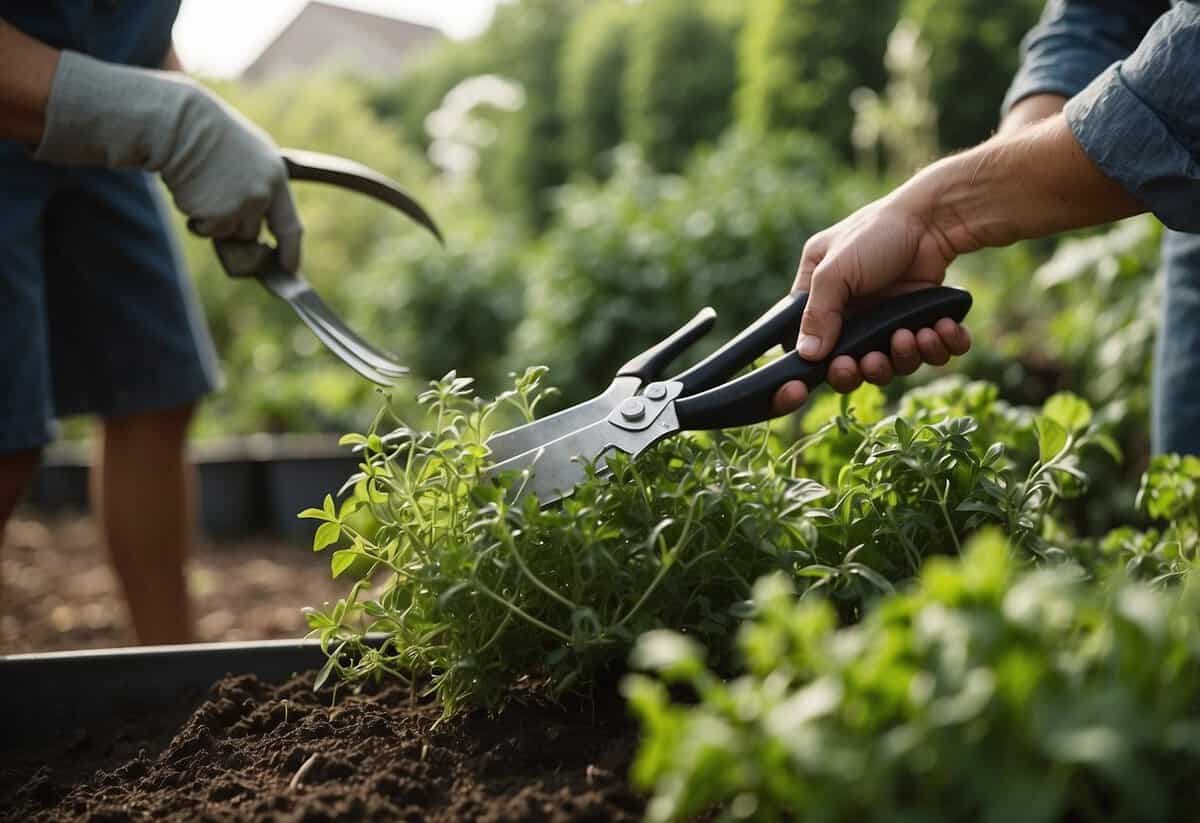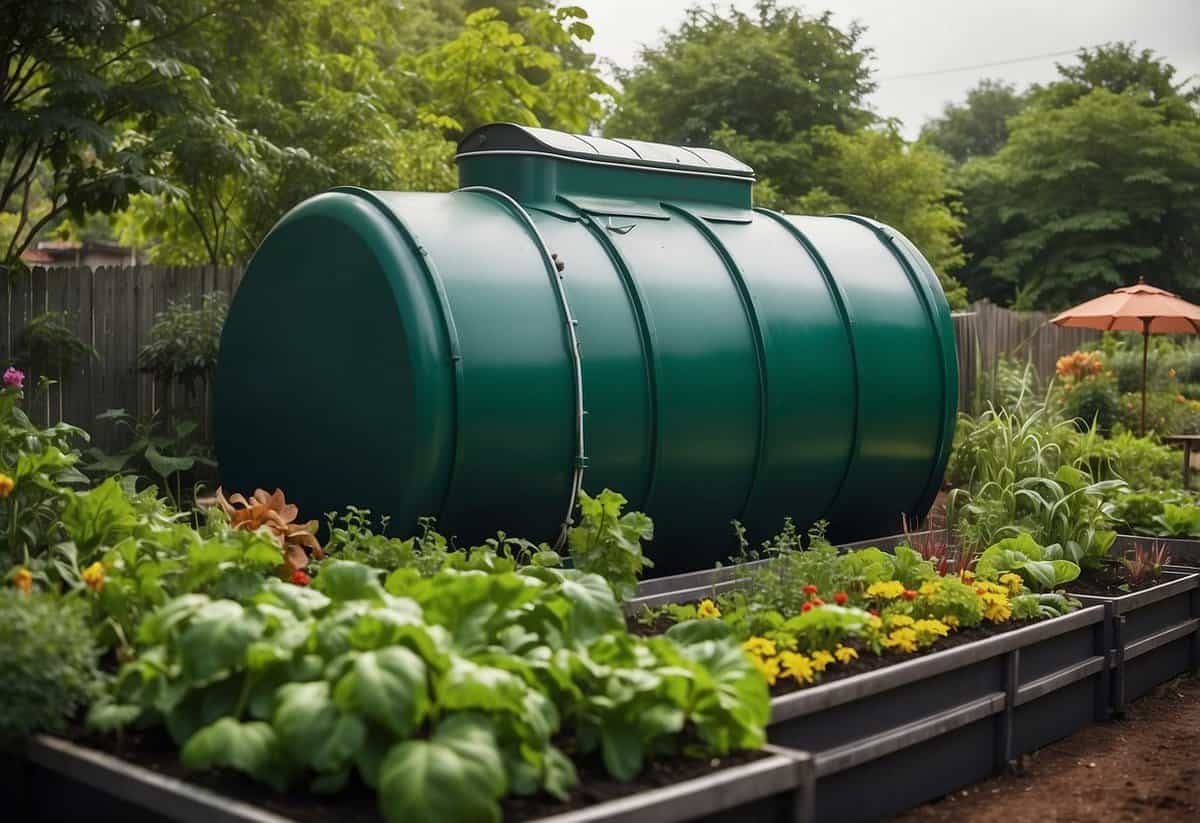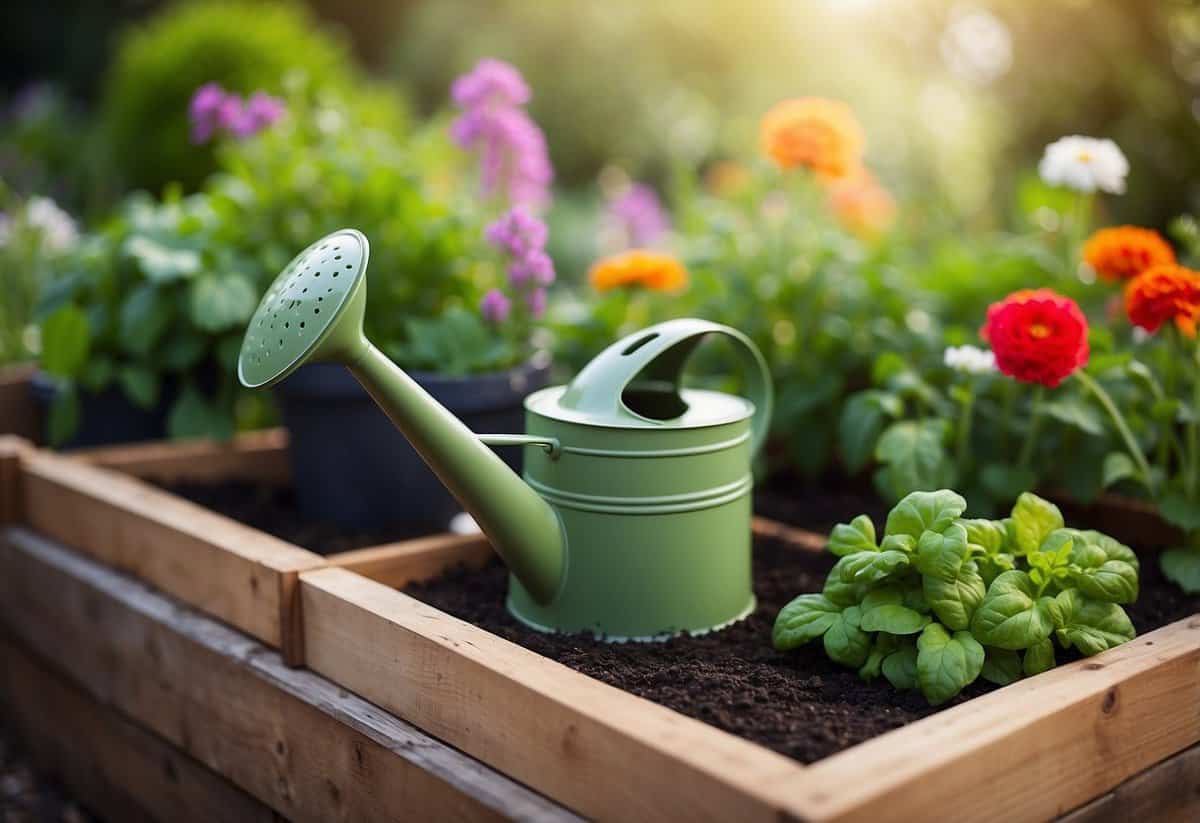Kitchen Garden Tips: Simple Ideas for Fresh Homegrown Herbs
Growing your own kitchen garden can be a rewarding experience. It offers fresh, delicious herbs and vegetables right at your doorstep. By incorporating a few simple tips, you can ensure your kitchen garden thrives and provides you with the ingredients you need for your culinary creations.

Whether you have a large backyard or a cozy balcony, a kitchen garden is within your reach. It doesn’t require a lot of space or expensive equipment. With a little effort, you can create a lush, productive garden that enhances your meals and supports a healthier lifestyle.
1) Rotate Your Crops

Rotating your crops each year is essential for a healthy kitchen garden. By changing the location of your plants, you help prevent pests and diseases from building up in the soil.
It also helps maintain soil fertility. Each plant group uses and adds different nutrients to the soil. You can find more details and tips for vegetable gardens here.
Divide your garden into plots and rotate crops like nightshades, legumes, and brassicas in a planned sequence for the best results. This technique ensures healthier plants and better harvests.
2) Use Raised Beds

Raised beds are fantastic for your kitchen garden. They help you control the soil quality and provide better drainage, ensuring your plants grow strong.
You can grow a wide variety of vegetables like carrots, which thrive in the loose soil of raised beds. These beds also warm up faster in spring, giving you an extended growing season.
Don’t forget to set up proper irrigation. Raised beds dry out quicker, so you might need to water them more often. Consider using sprinklers to make the job easier and save time.
Raised beds can also help you avoid common soil problems and pests. By elevating your garden, you create a more controlled environment for your plants. This makes it easier to manage weeds and prevents many ground-dwelling pests from reaching your crops.
3) Plant Companion Plants

Companion planting is a great way to help your kitchen garden thrive. By planting certain vegetables together, you can boost growth and keep pests away.
For example, tall plants like corn can provide shade for lettuce, which struggles in the heat. Also, corn can support climbing plants like beans.
Plants like spinach and Swiss chard can grow in the shadow of taller plants. This is helpful, especially in hot weather.
Try planting fast-growing veggies like radishes between slower-growing crops. You’ll harvest them before the bigger plants need more space.
4) Implement Drip Irrigation

Drip irrigation is a fantastic way to ensure your kitchen garden stays well-watered. It delivers water directly to the roots of your plants, which saves water and promotes healthy growth.
Start by laying out a garden hose around your plants. Attach a hose cap at the end and drill small holes for the emitters.
Next, connect the header to your water source using a secure garden hose connection. This ensures your system will be leak-free and efficient.
Consider including a screen filter to trap particles that could clog the emitters. This keeps your water flow consistent and reliable.
Lastly, adjust your water pressure with a pressure regulator. This helps match the water flow to your garden’s needs. Happy gardening!
5) Start a Compost Bin

Creating a compost bin is a great way to recycle kitchen scraps. Start by choosing a bin that suits your space. If you have a backyard, a larger bin may work. For smaller spaces, consider a compact kitchen bin.
Begin by layering brown, carbon-rich materials like dried leaves or shredded paper. Add green, nitrogen-rich materials like vegetable scraps and grass clippings. You can learn more from Epic Gardening.
Make sure to keep your compost moist but not too wet. Turn it regularly to add air and speed up decomposition.
6) Pest-Proof with Netting

Using netting in your kitchen garden is a simple yet effective way to protect your plants. It creates a physical barrier that keeps pests like aphids and beetles away.
Netting also helps reduce the need for chemical pesticides, making your garden safer.
For best results, choose a material like nylon, which is durable and UV-resistant. Regularly check your netting for any damage to ensure it continues to safeguard your garden effectively. For more on insect netting, check out this insect netting guide.
7) Prune Regularly

Pruning helps your plants grow strong and stay healthy. When you prune, you remove dead or unhealthy parts of the plant. This allows the plant to focus its energy on new and better growth.
Picture some herbs and vegetables like peppers and Swiss chard in your garden. By pruning the back leaves, you help the plants grow toward the front, giving more room for others to get sunlight and space.
Always use clean, sharp tools to make clean cuts. This helps prevent disease and promotes faster healing. Remember, regular pruning keeps your kitchen garden in top shape.
8) Plant Perennials

Adding perennials to your kitchen garden can save you time and effort. These plants come back year after year. Once you plant them, you don’t have to replant them each season.
Consider adding perennial herbs like lovage. Lovage has a celery-like flavor and is great for soups and salads. To learn more about lovage, check out this article on perennial vegetables.
Other good choices are trees and shrubs. They are low-maintenance and can enhance your garden’s layout. For more layout ideas, visit this kitchen garden layout guide.
9) Use Organic Mulch

Using organic mulch can make a big difference in your kitchen garden. It helps control soil temperature, keeping your plants cool in the summer and warm in the winter.
By using organic mulch, you can reduce weeds. This gives your plants more room to grow without competition.
Organic mulch also keeps the soil moist. It reduces the need for frequent watering, which can save you time and effort.
Compost is one of the best organic mulches. It adds nutrients to the soil and can be made from kitchen scraps and yard waste. Learn more about its benefits here.
10) Install a Rainwater Tank

Collecting rainwater is a great way to water your kitchen garden. It helps save on water bills and is environmentally friendly.
To start, choose a tank that’s made from thick plastic. Thin containers can crack or break. Make sure it’s dark-colored to prevent algae growth.
Place your rainwater tank under a downspout to collect runoff from your roof. Remember to attach spigots and hose connections finger-tight to avoid leaks.
Choosing The Right Plants

Selecting the right plants for your kitchen garden depends on your local climate, the condition of your soil, and the available space in your garden.
Climate Considerations
It’s important to consider your local climate when choosing plants. Some vegetables and herbs thrive in cooler conditions, while others need heat to grow well. For instance, spinach and lettuce do well in cooler temperatures. Hot-season crops like tomatoes and peppers require warmer weather.
To get the best results, choose plants that are suited to your area’s climate. Check your local hardiness zone and growing season. This helps ensure that your plants will thrive throughout the year. Utilizing local guidance can also give you plant suggestions specific to your region.
Soil Requirements
Different plants have varying soil needs. While carrots prefer loose, well-drained soil, strawberries do best in slightly acidic soil. Test your soil’s pH levels and nutrient content before planting. Adjust the soil with compost or fertilizers to meet the needs of your chosen plants.
Raised beds are beneficial because they give you control over soil quality. Raised beds also improve drainage and make it easier to manage weeds. By tailoring the soil to your plants’ requirements, you enhance growth and yield.
Space Optimization
Space is crucial in a kitchen garden. If you have limited room, consider vertical gardening. Trellises and hanging pots can help maximize your space. Herbs like basil and thyme can grow in small pots on windowsills. This saves ground space for larger crops.
Plan your garden layout to make the best use of your space. Group taller plants like corn towards the back and shorter ones like radishes at the front. Companion planting, where certain plants support each other’s growth, is another way to get the most out of your garden space. For example, planting marigolds can help repel pests from your vegetables.
Maintaining Your Kitchen Garden

Keeping your kitchen garden healthy requires proper watering, pest control, and attention to seasonal changes. By focusing on these areas, you can ensure your garden thrives throughout the year.
Watering Techniques
Watering your kitchen garden correctly is crucial. Most plants need about 1 inch of water per week. Using a drip irrigation system or a soaker hose helps deliver water directly to the roots, reducing leaf moisture and preventing diseases.
Water early in the morning to minimize evaporation and give plants time to dry before evening. This also prevents fungal growth. For container gardens, check soil moisture daily since pots dry out faster than ground soil. Stick your finger into the soil up to the first knuckle; if it feels dry, it’s time to water.
Pest Control Tips
Pests can be a significant issue in kitchen gardens. Regularly inspect plants for signs of pests like holes in leaves, discoloration, or sticky residue. Handpicking larger pests like caterpillars or beetles is effective for small infestations.
Use insecticidal soap or neem oil for bigger problems, but always follow the instructions carefully. Encouraging beneficial insects like ladybugs and lacewings can also help manage pests naturally. Planting marigolds and basil around your garden can deter some pests due to their strong scents.
Seasonal Care
As seasons change, so do the needs of your garden. In spring, focus on preparing soil by adding compost or well-rotted manure. This provides nutrients for the growing season. Summer requires attention to watering due to higher temperatures and potentially less rainfall.
In fall, clean up dead plant material to prevent pests and diseases from overwintering. Mulch around plants to protect roots from frost. During winter, consider covering beds with burlap or row covers to protect against severe weather. By adjusting your care routines with the seasons, you can keep your kitchen garden productive year-round.
Harvesting And Using Your Produce

Knowing when to pick your kitchen garden’s fruits and veggies, how to store them properly, and fun ways to use them in the kitchen will help you make the most of your garden.
When To Harvest
Harvesting at the right time ensures the best flavor and texture. For many veggies like tomatoes and bell peppers, pick them when they are fully colored.
Leafy greens such as lettuce and spinach should be harvested when the leaves are tender. Herbs like basil and mint can be picked continuously as they grow.
Root vegetables like carrots and beets are best when they have reached their mature size. Regular picking encourages more growth.
Storing Fresh Produce
Proper storage keeps your garden produce fresh longer. Leafy greens should be washed, dried, and stored in the fridge in a sealed container.
Root vegetables like carrots and radishes do well in a cool, dark place. Tomatoes can ripen at room temperature, out of direct sunlight.
Herbs can be stored in a jar with water for short-term use or dried for longer storage. Storing produce correctly reduces waste and preserves its quality.
Creative Recipes
Using your garden’s bounty in creative recipes can be fun and rewarding. Make zucchini bread or grilled zucchini foil packs from your summer squash.
Herbs like basil are great for homemade pesto, while mint can freshen up a summer salad. Sweet potatoes can be used in a casserole or baked into sweet potato bread.
Combine different vegetables for a harvest oven-roasted vegetable medley. Experiment with your produce to find new favorite recipes and enjoy the taste of your hard work.







